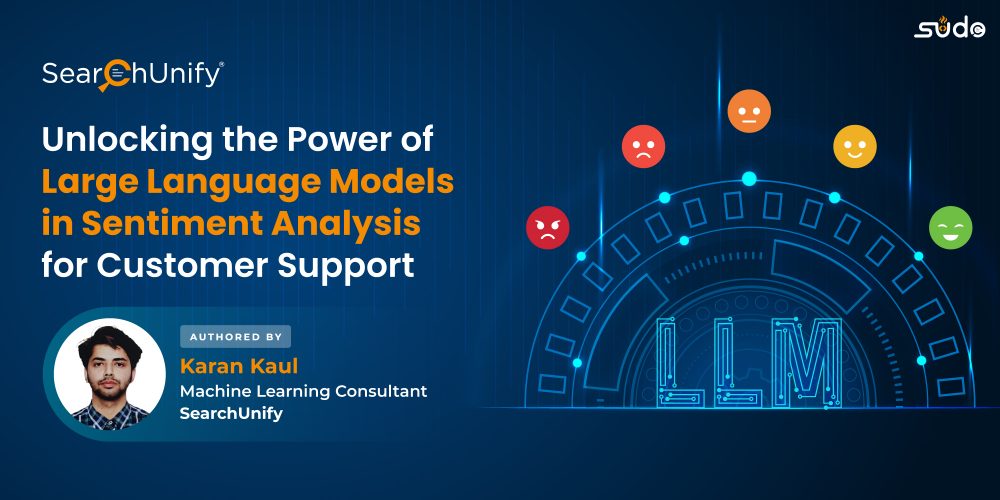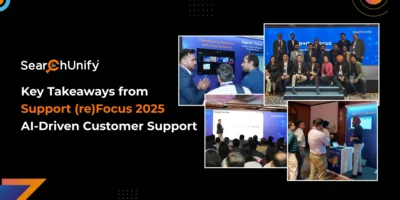
In the realm of customer support, grasping customer sentiments and formulating responses that take those sentiments into account are crucial for establishing robust relationships and nurturing loyalty. Sentiment analysis, the process of extracting emotions and opinions from text data, has been a blessing in deciphering customer feedback. However, accurately gauging sentiment from complex and varied language patterns has long been a challenge.
Enter Large Language Models (LLMs), the cutting-edge artificial intelligence (AI) marvels that are revolutionizing sentiment analysis by elevating its accuracy, granularity, and efficiency to unprecedented heights.
In this blog post, we embark on an exploration of how LLMs have reshaped the landscape of sentiment analysis in customer support. Let’s get started.
Techniques Used in Sentiment Analysis
- Rule-Based Approach: This involves predefined rules and patterns to help determine the sentiment of a text. Classification into negative, positive, or neutral is also done on the basis of predetermined criteria.
- Lexicon-Based Methods: This approach relies on pre-made dictionaries with words and their sentiment scores (positive, negative, or neutral). It compares the text to words in a dictionary to classify their sentiment.
- Hybrid Approach: It combines rule-based techniques with machine learning (ML) to boost conversational capabilities, and handle a wide range of user queries.
- Emotion Detection: This approach leverages natural language processing (NLP) and ML techniques to analyze contextual information and determine the underlying emotional state.
These techniques can be combined or adapted based on the specific requirements and challenges of the sentiment analysis task at hand. However, they come with a few limitations.
Limitations of Traditional Sentiment Analysis Approaches
Traditional approaches, while valuable in many scenarios, do have certain limitations that can hinder their effectiveness in text sentiment analysis. Some of the key limitations include:
- Word-level Analysis: Traditional sentiment analysis often relies on word-level analysis, where each word is assigned a sentiment polarity (e.g., positive, negative, neutral). While this approach works reasonably well for simple sentences, it fails to capture the overall sentiment of more complex sentences or paragraphs, where the sentiment might be influenced by the combination of words or the context in which they are used.
- Data Imbalance: Sentiment analysis datasets often suffer from class imbalances, where one sentiment class is significantly more prevalent than others. This imbalance can bias the model towards the dominant class, leading to skewed results and reduced accuracy in predicting less frequent sentiments.
- Domain-Specific Sentiment: Sentiment analysis models trained on general datasets might not perform optimally in domain-specific texts. Language and sentiment expressions can vary significantly across different domains, and traditional approaches may struggle to adapt to these nuances.
- Contextual Polarity Shifting: Based on the context, certain phrases or words can change sentiment or polarity. Sentiment analysis models may struggle with capturing such shifting sentiments accurately.
Bias and Cultural Variations: Sentiments are often expressed differently across languages and regions, which can hinder the model’s understanding of them. - Sentiment Ambiguity: Human language is highly ambiguous which can lead to misinterpretation of typos, synonyms, abbreviations, etc. Some statements may have mixed sentiments or can be sarcastic, making it difficult for traditional models to accurately interpret the intended sentiment.
To overcome these limitations, employing LLMs helps capture the intricacies of language and context, providing more accurate and nuanced sentiment analysis results and more. Let’s find out.
The Role of LLMs in Sentiment Analysis
As the field of NLP continues to advance, sentiment analysis techniques are expected to become increasingly sophisticated, addressing these limitations and enhancing their applicability in customer support interactions. Here’s how LLMs help:
- Contextual Understanding: LLMs excel at understanding the context in which words and phrases are used. Unlike traditional word-level sentiment analysis, LLMs can capture the overall sentiment of complex sentences or paragraphs, taking into account the surrounding context and relationships between words. This contextual understanding enables more precise sentiment analysis in customer support interactions, where sentiments are often influenced by the entire conversation.
- Fine-Grained Sentiment Analysis: LLMs can go beyond simple positive or negative sentiment classification. They possess the ability to detect subtle emotions and distinguish fine-grained sentiment expressions, such as detecting underlying emotions or identifying the intensity of sentiment.
- Transfer learning: Large language models are pre-trained on massive amounts of textual data, and this pre-training can be leveraged for transfer learning in sentiment analysis tasks. By fine-tuning the model on a specific sentiment analysis dataset, such as “negative,” the model can quickly adapt to the specific sentiment classification task, resulting in improved performance with less training data.
- Domain Adaptation: LLMs can be fine-tuned on domain-specific customer support data, making them adaptable to different industries or specialized domains. This helps when language and sentiment expressions vary significantly based on the nature of the products or services offered.
- Handling Negation and Intensifiers: LLMs can effectively handle negations and intensifiers, such as “not” and “very,” which are crucial for sentiment analysis. By recognizing the impact of these linguistic elements, LLMs can accurately interpret the intended sentiment of statements, avoiding misclassifications that traditional models might encounter.
- Continuous Learning: LLMs are constantly updating their knowledge through unsupervised learning, allowing them to adapt to evolving language patterns and sentiment expressions. This ensures that sentiment analysis models stay up-to-date and maintain their accuracy over time.
- Prompt-based: Prompt-based approaches have emerged as promising techniques in sentiment analysis. Instead of relying solely on the input text, prompt-based methods incorporate additional information or instructions, known as prompts, to guide the sentiment analysis process. This allows you to tweak processes according to your needs.
- Real-time Analysis and Response: LLMs can perform sentiment analysis in real-time, allowing customer support teams to quickly identify and address customer sentiments and issues. Real-time sentiment analysis empowers businesses to respond promptly to customer needs, improving overall customer satisfaction.
Unlock the Power of LLM-based Sentiment Analysis with SearchUnify
Incorporating LLM-based sentiment analysis platforms in customer support processes empowers businesses to gain deeper insights into customer sentiment, identify potential pain points, and provide more personalized and empathetic support.
Discover the capabilities of LLM-powered products which provide real-time insights into a wide array of parameters and indicators, helping agents gauge escalation probability and case sentiment with utmost accuracy. Experience the product in action by requesting a live demo now.










